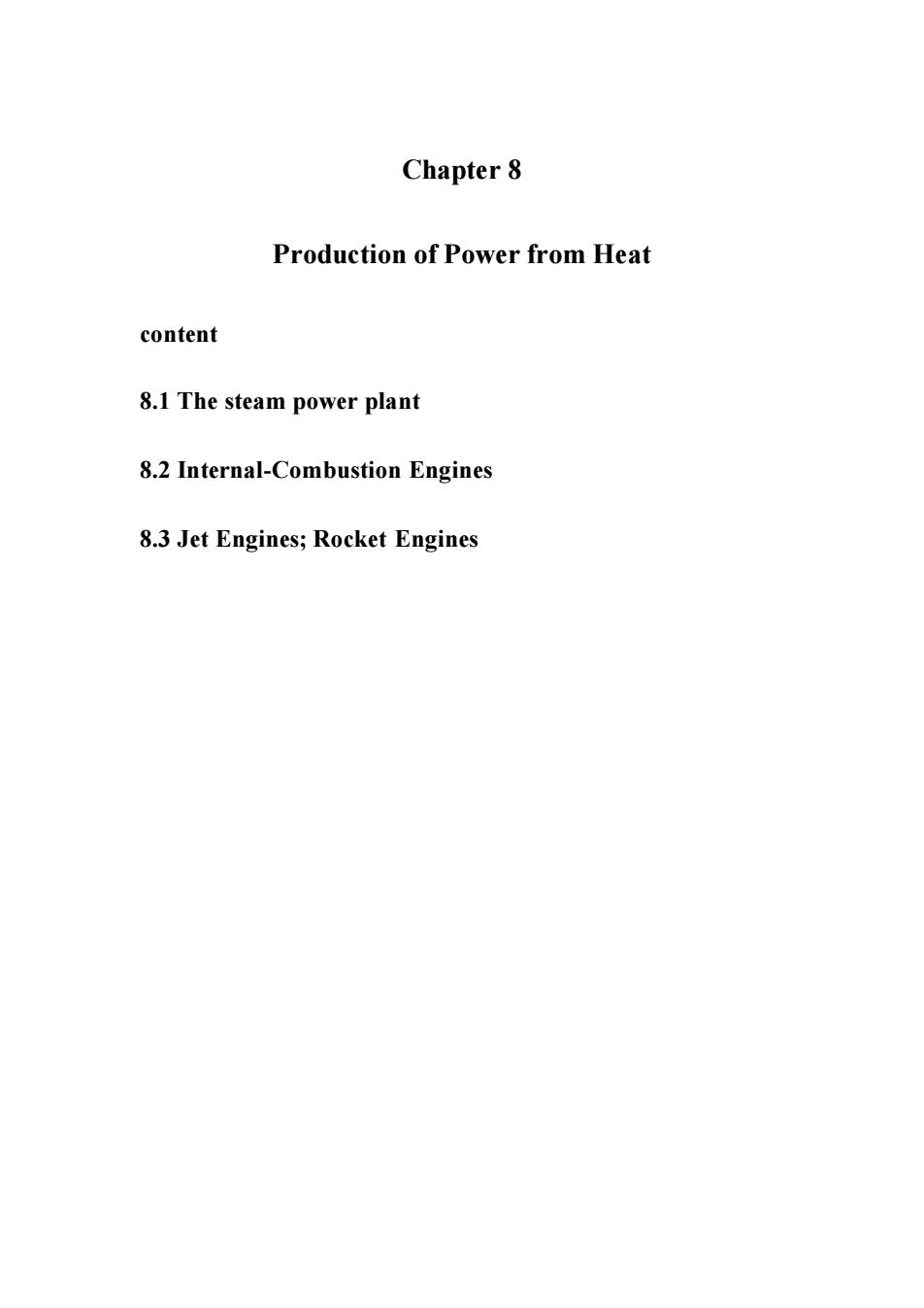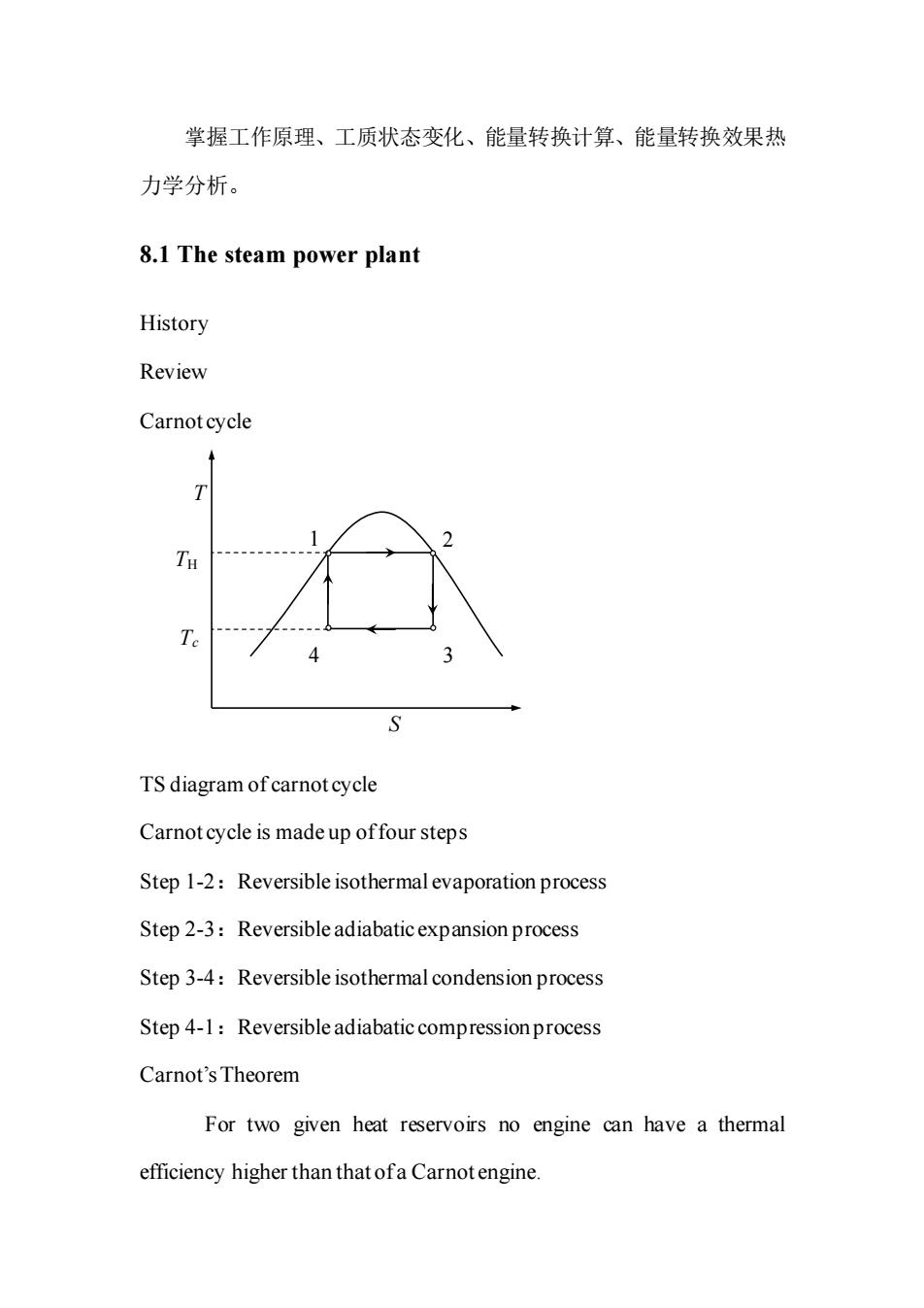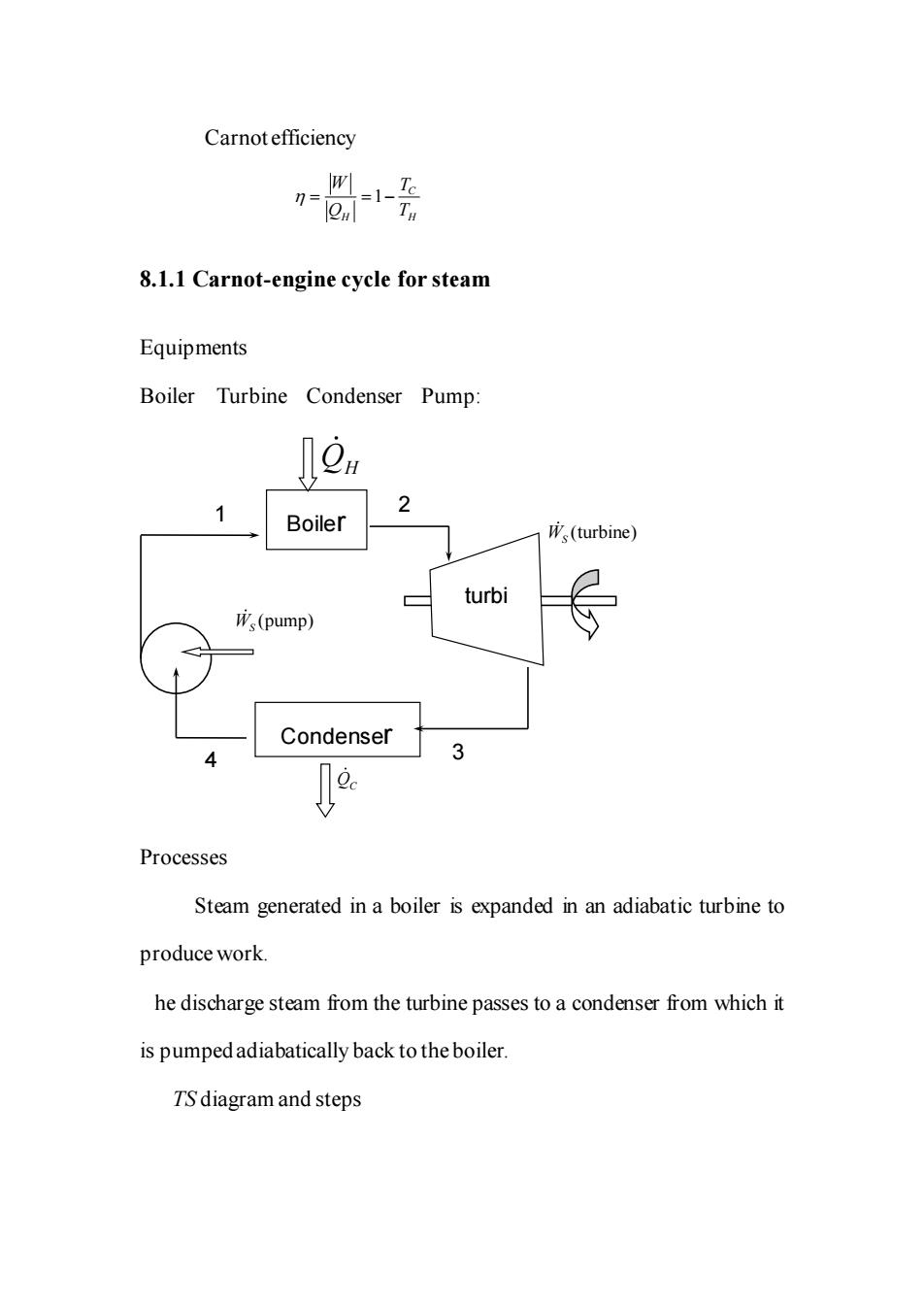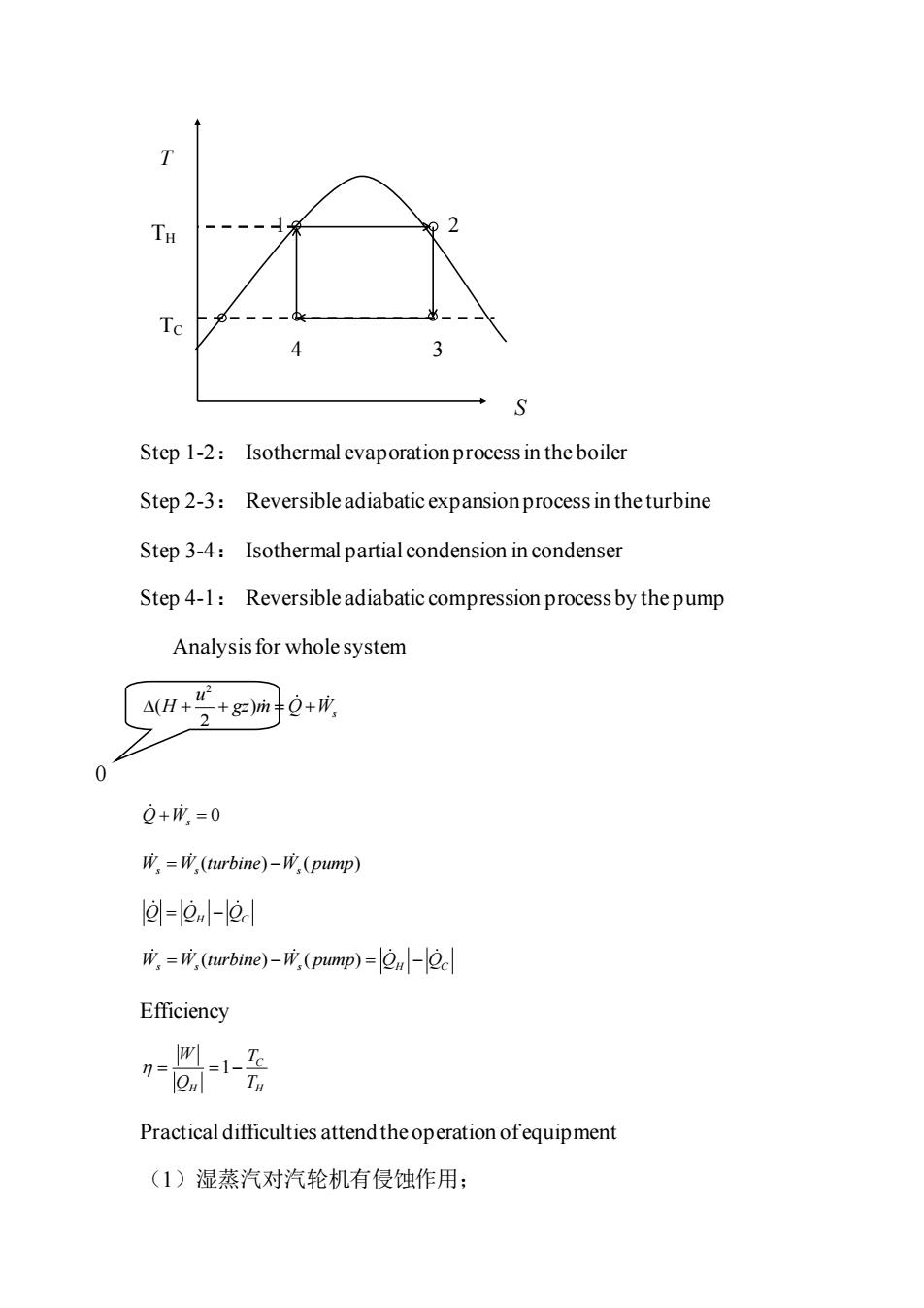
Chapter 8 Production of Power from Heat content 8.1 The steam power plant 8.2 Internal-Combustion Engines 8.3 Jet Engines;Rocket Engines
Chapter 8 Production of Power from Heat content 8.1 The steam power plant 8.2 Internal-Combustion Engines 8.3 Jet Engines; Rocket Engines

Introduction Forms ofenergy used by mankind Energy from the sun The kineticenergy associated with atmospheric winds The potential energy oftides Hydroelectric power Chemical energy of fuels combustion fission Heat Nuclear energy Heat engine the steam powerplant the internal-combustion Mechanical engine energy This chapter is devoted to the analysis of several common heat-engine cycles 目的: 研究循环中热、功转换的效果及其影响因素,探求提高能量转换 效果的途径。 内容: 讨论蒸汽动力循环的热效率、功以及循环中各工质状态的变化。 要求:
Introduction Forms of energy used by mankind Energy from the sun The kinetic energy associated with atmospheric winds The potential energy of tides Hydroelectric power This chapter is devoted to the analysis of several common heat-engine cycles 目的: 研究循环中热、功转换的效果及其影响因素,探求提高能量转换 效果的途径。 内容: 讨论蒸汽动力循环的热效率、功以及循环中各工质状态的变化。 要求: Heat Mechanical energy Chemical energy of fuels Nuclear energy the steam power plant the internal-combustion engine Heat engine combustion fission

掌握工作原理、工质状态变化、能量转换计算、能量转换效果热 力学分析。 8.1 The steam power plant History Review Carnotcycle TH T TS diagram of carnot cycle Carnot cycle is made up offour steps Step 1-2:Reversible isothermal evaporation process Step 2-3:Reversibleadiabaticexpansion process Step 3-4:Reversible isothermal condension process Step 4-1:Reversible adiabatic compressionprocess Carnot's Theorem For two given heat reservoirs no engine can have a thermal efficiency higher than that ofa Carnot engine
掌握工作原理、工质状态变化、能量转换计算、能量转换效果热 力学分析。 8.1 The steam power plant History Review Carnot cycle TS diagram of carnot cycle Carnot cycle is made up of four steps Step 1-2:Reversible isothermal evaporation process Step 2-3:Reversible adiabatic expansion process Step 3-4:Reversible isothermal condension process Step 4-1:Reversible adiabatic compression process Carnot’s Theorem For two given heat reservoirs no engine can have a thermal efficiency higher than that of a Carnot engine. 3 1 2 4 T S TH Tc

Carnot efficiency 卧1 8.1.1 Carnot-engine cycle for steam Equipments Boiler Turbine Condenser Pump: 0⑨H 2 Boiler Ws(turbine) turbi 市,(pump) Condenser 3 Processes Steam generated in a boiler is expanded in an adiabatic turbine to produce work. he discharge steam from the turbine passes to a condenser from which it is pumped adiabatically back to the boiler TS diagram and steps
Carnot efficiency 1 C H H W T Q T = = − 8.1.1 Carnot-engine cycle for steam Equipments Boiler Turbine Condenser Pump: Processes Steam generated in a boiler is expanded in an adiabatic turbine to produce work. The discharge steam from the turbine passes to a condenser from which it is pumped adiabatically back to the boiler. TS diagram and steps Boiler Condenser turbi ne QH (turbine) WS QC (pump) WS 3 1 4 2

TH Tc S Step 1-2:Isothermal evaporationprocess in the boiler Step 2-3:Reversible adiabatic expansionprocess in the turbine Step 3-4:Isothermal partial condension in condenser Step 4-1:Reversible adiabatic compression process by the pump Analysis for whole system AH+号+gm于0+形 0 0+巾,=0 序,=m,(turbine))-f,(pmp) el=0-loc W,=W.(turbine)-W.(pump)=Qu-Qc Efficiency Practical difficulties attend the operation ofequipment (1)湿蒸汽对汽轮机有侵蚀作用:
Step 1-2: Isothermal evaporation process in the boiler Step 2-3: Reversible adiabatic expansion process in the turbine Step 3-4: Isothermal partial condension in condenser Step 4-1: Reversible adiabatic compression process by the pump Analysis for whole system 2 ( ) 2 s u + + = + H gz m Q W 0 Q W+ = s ( ) ( ) W W turbine W pump s s s = − Q Q Q = − H C ( ) ( ) W W turbine W pump Q Q s s s H C = − = − Efficiency 1 C H H W T Q T = = − Practical difficulties attend the operation of equipment (1)湿蒸汽对汽轮机有侵蚀作用; 1 4 T S 3 2 TC TH 0